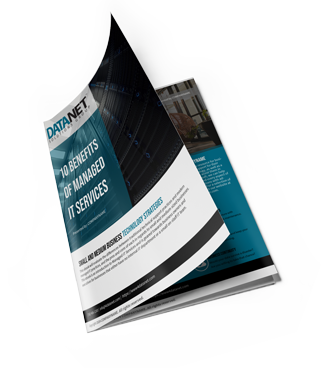Understanding Business Continuity

When the sky is falling on your business, can you make it through the storm?
For the average business owner, business continuity is looked upon as a secondary system that is put in place to protect the investments the business has made. Since the platform doesn’t have much to do with a business’ day-to-day operations, often times some aspects of a business’ continuity strategy are overlooked; a major mistake that the business owner will realize when it is suddenly too late.
Understanding the elements of a comprehensive business continuity strategy is advantageous for any business owner or executive that is tasked to ensure the business’ operations are sustained. To design a solution that is right for your organization, you will first have to pinpoint the elements that make up a successful continuity strategy, and thoroughly implement them.
Why Enact a Business Continuity Plan?
The fact is that your company’s health is a human issue. A healthy business that supports numerous workers not only provides a good or service to consumers, it provides food, shelter, transportation, education, and more for the people employed there and their families. This is true for every business, which is why it is crucial to have some assurances in place when tragedy strikes. When data is lost or when systems that these people and their families depend on fail, there needs to be a strategy to get operations up and running again fast. Whether you have two employees or two thousand, operational sustainability is crucial to every single one of their livelihoods.
What are the Elements of a Business Continuity Strategy?
A working and thorough continuity strategy is not just a set of protocols that are enacted when something terrible happens. It is a continually changing, fluid strategy that will allow you to sustain operations through any number of issues that have the potential to hinder your organization's progress. Each element of a continuity strategy is the direct result of another element, while being the cause for another.
Element I - Initiation
In the initiation phase of a business continuity strategy the concerned party needs to determine what exactly the objective of the continuity plan is, the general scope of the coverage under that plan, and who in the organization is going to carry out the protocol’s outlined in the plan.
Element II - Analysis
In the analysis phase, you will conduct a business impact analysis (BIA) and a threat and risk analysis (TRA), and as the plan begins to come together the analysis of any impact scenarios that have been carried out allows an organization to adjust the other variables to best protect against the major threats.
The BIA will essentially separate the critical organizational functions from those that aren’t critical to the sustainability of operations. Once those have been determined each critical function will be assigned a recovery point objective (RPO) and a recovery time objective (RTO). The recovery point objective of a function is the acceptable amount of data loss that the organization can allow, while the recovery time objective is the acceptable amount of time it will take to restore the data needed to sustain operations. Under the BIA, an organization will also want to identify a maximum tolerable period of disruption (MTPOD). This is the maximum amount of time that an organization has to restore core systems before the stakeholders of the endeavor begin to consider their investments to be in serious jeopardy.
The TRA will pinpoint potential threats that face a business. Some of today’s major threats include:
- Cyber attacks
- Sabotage or user error
- Power cut
- Hardware failure
- Sickness
- Natural disasters
- Fire
- On or off-site utility outage
Each of these (and often many more) have to be considered in order to properly determine the recovery objectives for each threat. This way, you have a complete understanding exactly where your organization stands when it is beset with some sort of adversity.
Element III - Continuity Plan Design
Once the groundwork is finished, the plan can start to be designed. The first element an organization should consider is who will be responsible for the implementation of the continuity plan if it needs to be launched. At this point a team should be assembled and assigned very specific roles that all carry essential tasks. You will want to identify who is in charge of what and be sure that all members of the continuity team know how to contact other members of the team to enhance the prospects of successfully launching the program proficiently and quickly.
During this part of the plan, decision makers will also want to develop some strategies, such as:
- A backup and recovery strategy
- Continuity execution strategy
- Escalation, notification, and activation strategies
- Administration strategy
By pinpointing the solutions that will be needed, the continuity team can begin to plan which solutions they would seek out as a part of the continuity strategy.
Element IV - Implementation
In the design phase, the team will pinpoint the solutions that are needed to provide the best chance at complying with their continuity goals. In this phase of the project, however, all the planning and designing of the solution is finally implemented. Some of the variables that need to be set in motion at this stage of the project include:
- Emergency response procedures
- Detailed recovery procedures
- Continuity activation procedures
- Purchase of recovery resources
- Ensure recovery team’s responsibilities
Now that everything is in place and the whole team understands their responsibilities, it is crucial that an organization does not become complacent. While there may have been a thorough design and thorough understanding of the plan, to execute a plan requires the final step in the business continuity strategy.
Element V - Testing and Maintenance
An organization that doesn’t frequently test the limits of its continuity plan may run into problems with their continuity plan when it’s needed. A comprehensive business continuity plan requires careful and conscientious consideration of every element in order to work properly. By testing and maintaining the continuity plan periodically, an organization can ensure that when the worst happens, that they are ready to react quickly.
To protect the people that depend on your business, a thorough and well designed continuity plan is a must. If you are having issues with the design of your continuity plan and would like help putting together the solutions and practices you will need to ensure you are protected for the worst, call Data Net's knowledgeable consultants at (760) 466-1200. We can help your organization protect itself from whatever the future holds.
Understanding IT
Our 10 Benefits

This whitepaper will evaluate the differences between traditional technical support practices and modern managed IT practices and the pros and cons of both in regards to small and medium-sized businesses.

